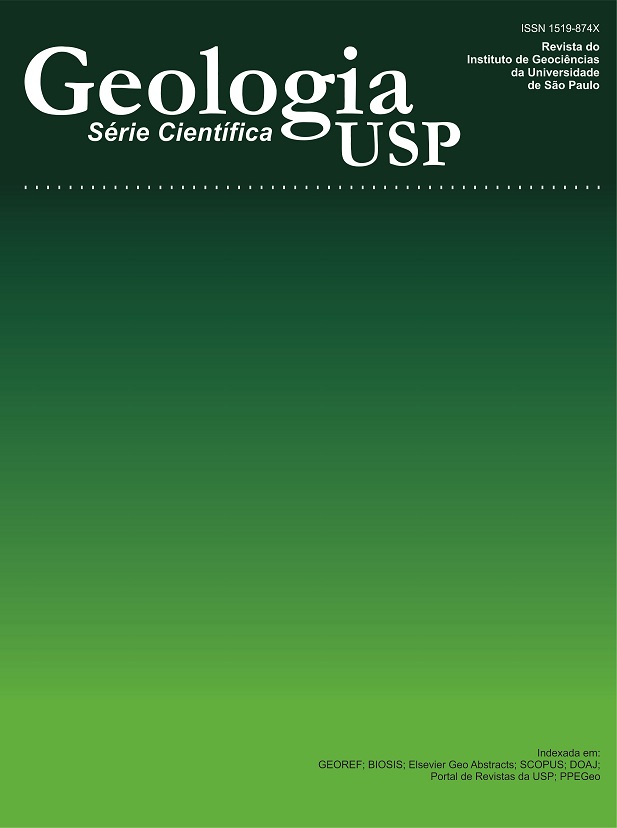Relations between Potiguar Rift structural framework and the adjacent basement: analysis of gravity and magnetic data
DOI:
https://doi.org/10.11606/issn.2316-9095.v16i1p43-60Keywords:
Gravity, Magnetics, Potiguar Basin, Tectonic structuresAbstract
The potential geophysical methods (gravity and magnetic) classically have good responses for the study of tectonic framework of sedimentary basins. In this work, we applied advanced processing techniques for gravity and magnetic data (reduce to pole, matched filter, horizontal gradient and tilt derivative) in order to characterize the geophysical expression of the main structures of the Potiguar Rift and its crystalline basement (NE Brazil). In an attempt to establish the behavior of major crustal blocks of the Borborema Province under the sedimentary package of the Potiguar Basin, eight tectonicgeophysical domains were identified by correlating anomalous patterns of causative sources with geological data available in the literature. Extensive fault systems, which limit the Potiguar Rift, are presented as large positive gravity lineaments. The main shear zones are correlated to expressive elongated anomalies in NE-SW direction and control the boundaries of the crustal blocks of the Borborema Province. The integration of various geophysical maps with the surface geology also allowed to correlate the geophysical expression of these structures and to establish its influence in the rifting processes by which passed the basin, including the NE-SW structural features observed in the regions adjacent to the basin. It was possible to define the presence of these features below the thick sedimentary package, strongly controlling internal architecture of the Potiguar Rift. These results support the hypotheses about the influence of Precambrian structures in the formation of the basin during the rifting in the continental margin of Brazil. Importantly, the inference of NW-SE trending deformation, mostly revealed by magnetic data, contributes to the hypothesis that there has been the spread of E-W tectonic forces that formed the equatorial margin into the continent. Such efforts also influenced the truncation of basement structures, NNW-SSE deformation of the Rio Ceará-Mirim dykes and caused EW lateral drag, which occurs between the Portalegre Shear Zone and the Carnaubais Fault SystemDownloads
Downloads
Published
2016-04-07
Issue
Section
Articles
License
Authors who publish in this journal shall comply with the following terms:
- Authors keep their copyright and grant to Geologia USP: Série Científica the right of first publication, with the paper under the Creative Commons BY-NC-SA license (summary of the license: https://creativecommons.org/licenses/by-nc-sa/4.0 | full text of the license: https://creativecommons.org/licenses/by-nc-sa/4.0/legalcode) that allows the non-commercial sharing of the paper and granting the proper copyrights of the first publication in this journal.
- Authors are authorized to take additional contracts separately, for non-exclusive distribution of the version of the paper published in this journal (publish in institutional repository or as a book chapter), granting the proper copyrights of first publication in this journal.
- Authors are allowed and encouraged to publish and distribute their paper online (in institutional repositories or their personal page) at any point before or during the editorial process, since this can generate productive changes as well as increase the impact and citation of the published paper (See The effect of Open Access and downloads on citation impact).
How to Cite
Souza, S. F. de, Castro, D. L. de, Bezerra, F. H. R., & Barbosa, J. A. (2016). Relations between Potiguar Rift structural framework and the adjacent basement: analysis of gravity and magnetic data. Geologia USP. Série Científica, 16(1), 43-60. https://doi.org/10.11606/issn.2316-9095.v16i1p43-60





